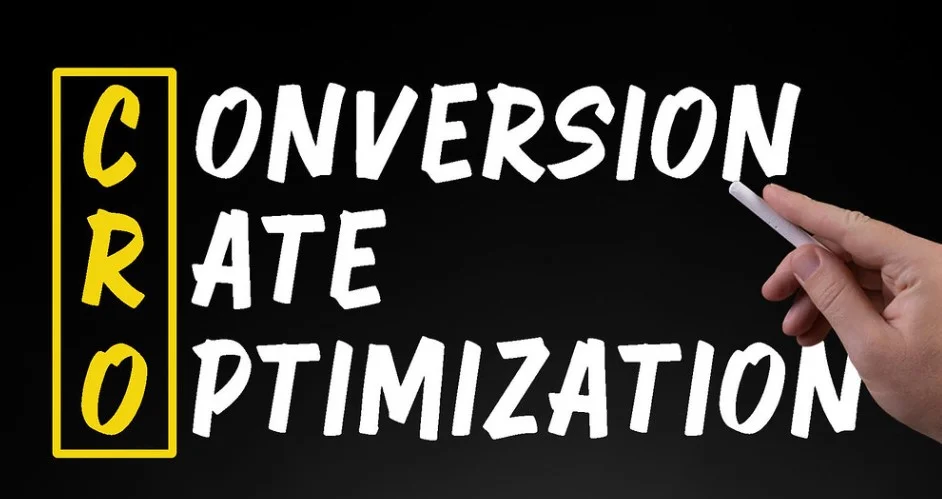Your conversion rate is one of the most important digital marketing metrics to measure your success. It tells you how many people are coming to your website and then taking the actions you want them to. And it essentially tells you if your marketing efforts are bearing fruit, getting results and delivering a return on the resources you’re investing in them.
What Is A Conversion Rate?
In the context of your website, a conversion rate is simply the number of visitors to your site that take the action you wanted them to take. While the most common conversion measured is how many visitors make a purchase or book an appointment, it’s also important to measure other micro conversions that lead a potential customer to make a purchase such as signing up for a newsletter for a discount or requesting a promo code. Even reading a blog post or watching a video on your site can help move the visitor into a customer. Anything that has an impact on the buying journey and moves them closer to a sale is a conversion worth tracking.
Why Are Conversions Important?
A conversion rate is the easiest way to determine if your marketing and PPC advertising services are beneficial for your business. It measures the effectiveness of your strategy. If your conversion rates are high and you’re happy with them, you can simply measure them regularly for any signs of dips or patterns and monitor from there. But it can get a little bit more complex if your conversion rate is not healthy or if you want to improve it to better capitalize on your web traffic.
For example, if people are landing on your website and not converting into leads or sales, you have to dig into why. The most common suggestion is that the customer decided not to purchase with you – they didn’t like your product or service, they didn’t find the information they needed, or you haven’t communicated what they need to know or provided the right conversion opportunities. And while all of these can be true, it can also be related to how people are getting to your site.
Are you using confusing or misleading keywords in your SEO strategy? Are your social ads not clear enough about what you offer or the type of customers you’re looking for? Which channels are producing the highest and lowest rate of conversion? So many of these details need to be considered and tested if your conversions are not where they should or need to be.
How Do You Know What Your Conversion Rates Are?
The easiest way to review your conversions and the important metrics that paint the overall success rate of your site is through Google Analytics. Be sure you have a conversion rate of 2-5% is average and anything over 5% is considered good or above average. That said, this metric typically applies to sales or leads captured. Smaller conversions that require less commitment such as signing up for a newsletter should be higher because there is less for the customer to lose and therefore more people should be willing to take the step.
You are then able to retarget these visitors with offers, personalized information, demos and at timing that might be better for them to bring them further down the sales funnel towards a sale. When looking at your conversion rate within Google Analytics, you’ll consider the number of visitors divided by the number of purchases, lead forms filled out, newsletter signups, etc. The numbers you are looking at will depend on your goals and your sales funnel, but if you find that they are over 5%, you’re doing well!
How To Improve Your Conversion Rate
When reviewing the data that makes up the different types of conversions you want your website visitors to make, if the number are not sitting between 2-5%, or you’re looking at metrics that could be much higher such as event tickets sold, free material downloads and other high converting options, you’ll want to dig into why. One place to start is reviewing the path visitors take to arrive at your site or landing page. Where are they coming from? Which referral options are providing the most traffic and the highest conversions? Which ones are lagging?
You may notice that Google is providing great traffic that converts well, but Facebook advertising does not, or vice versa. Look at the messaging and check for friction points along the paths for those that are underperforming. Are people leaving the process at a form? It could be the form is too cumbersome or asks for more information than your prospect is willing to provide. Or maybe it’s your message? Check the bounce rate on the pages your traffic is landing on. If they are leaving quickly from a particular source, it could be that your messaging is confusing or people are misunderstanding what you offer.
It could also be an overall issue with your site such as load speed, functionality or poor brand presentation. In these cases, testing is the best way to uncover the problem and optimize your conversions. You’ll also want to consider if you’re doing paid advertising with the referral sources that are underperforming. If so, there are often experts at the platform you can connect with. You can also hire a marketing agency to help you optimize and improve your results.
Final Words
Improving your conversion rate will help you to improve your return on investment which is another critical metric to look at. Focus on ensuring your customers have everything they need to convert on your site, platform or ad and the return on what you are investing (time and financial resources) will improve. Work to continuously improve this by keeping a close eye on your Analytics and results data from the platforms you are using.







